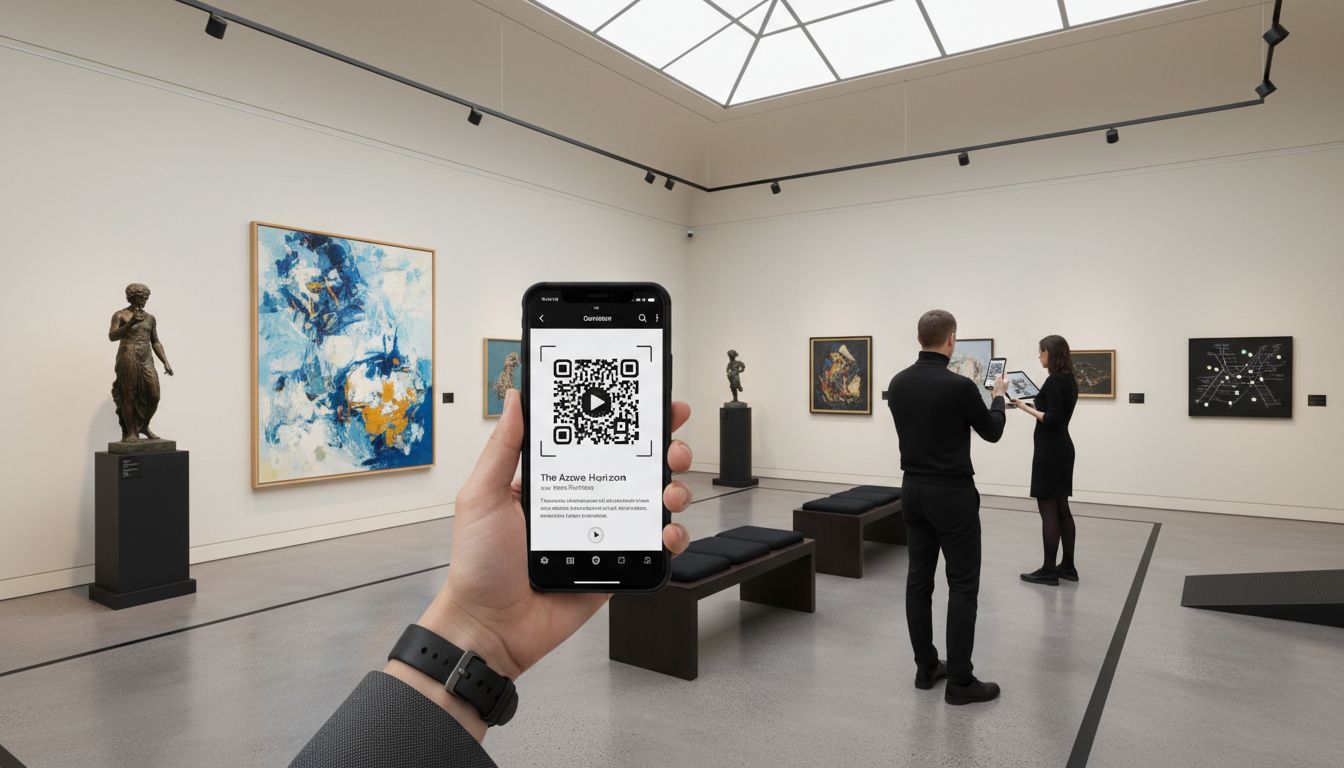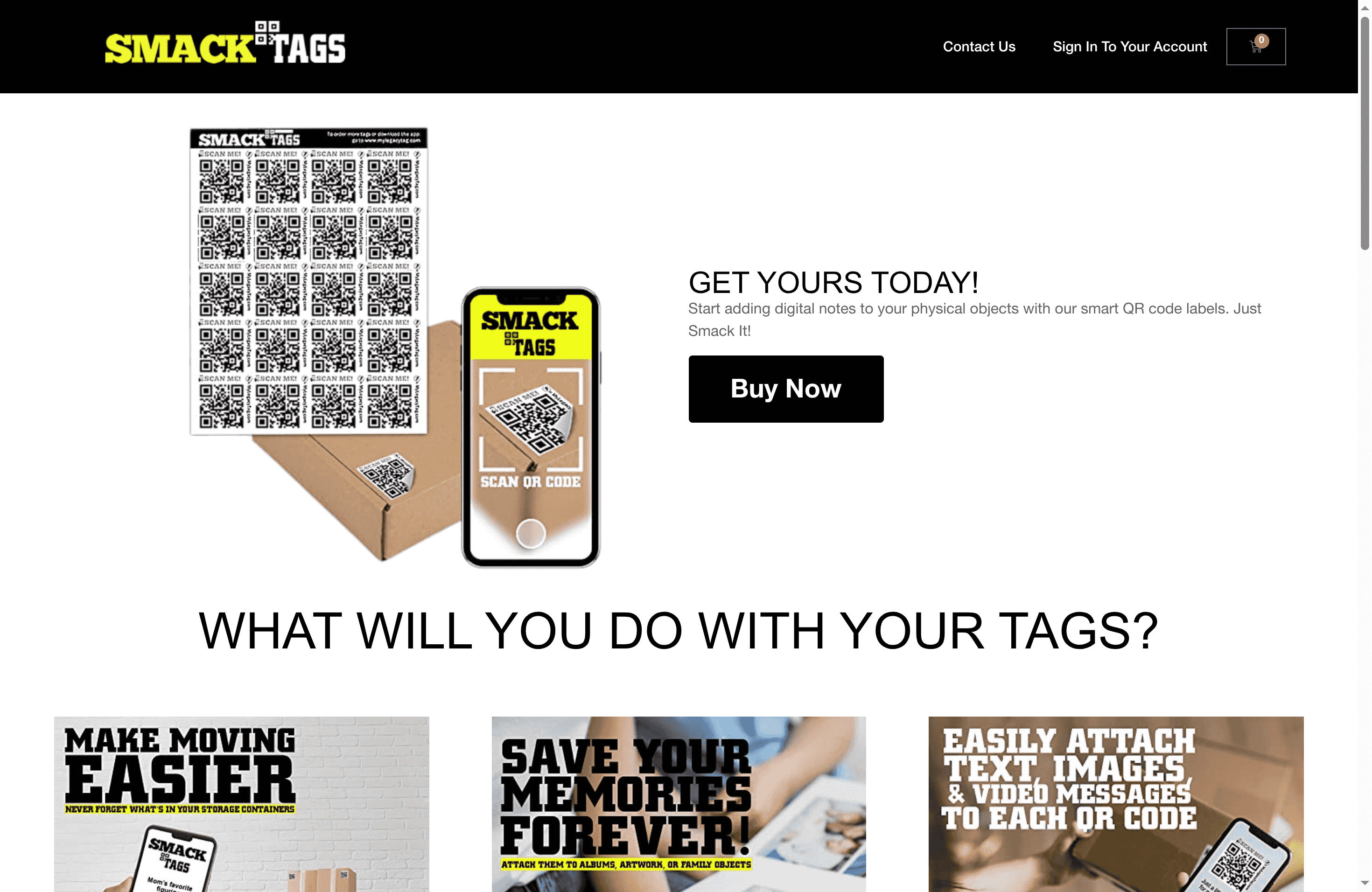The Essential Guide to QR Codes for Information Access
Every day, billions of QR codes are scanned worldwide to access menus, payments, and even museum tours. This small black and white grid has changed how quickly people connect the physical world with digital content. Understanding how QR codes store and share such a huge variety of information gives you a clear edge, whether you want to use them for business, art, or personal convenience.
Table of Contents
- What Are QR Codes And How Do They Work
- Types Of QR Codes And Their Distinct Uses
- Practical Applications For Artists And Businesses
- Ensuring Data Security And Privacy With QR Codes
- Common Pitfalls And How To Avoid Them
Key Takeaways
| Point | Details |
|---|---|
| Versatility of QR Codes | QR codes can store various data types and serve multiple functions across industries, from product tracking to marketing. |
| Security Risks | Users should be aware of potential cybersecurity threats, such as quishing, and verify QR code sources before scanning. |
| Practical Applications | Artists and businesses utilize QR codes to enhance engagement, streamline operations, and connect physical experiences to digital content. |
| Best Practices for Safety | Implement smart security measures, including using secure scanning apps and checking URLs, to protect against QR-related risks. |
What Are QR Codes and How Do They Work
QR codes are sophisticated two-dimensional matrix barcodes that pack an impressive amount of digital information into a compact visual format. According to Wikipedia, these codes were originally developed in 1994 by Denso Wave and represent a significant advancement in data encoding technology.
At their core, QR codes consist of black squares arranged on a white background, which can be rapidly scanned by digital imaging devices like smartphone cameras. These unique codes have remarkable versatility, capable of storing multiple data types including numeric, alphanumeric, byte/binary, and even kanji characters. Check out our guide on how QR codes store information to dive deeper into their technical capabilities.
The magic of QR codes lies in their complex grid structure. Unlike traditional linear barcodes that can only store limited information horizontally, QR codes use a two-dimensional matrix that allows for exponentially more data storage. Each square module in the code represents a piece of encoded information, and specialized scanning software can instantly translate these visual patterns into readable digital content. Whether you’re tracking products, managing documents, or sharing quick links, QR codes provide a fast and efficient method of information transfer.
Key characteristics that make QR codes powerful include:
- Rapid scanning speed (hence the name Quick Response)
- High data capacity compared to traditional barcodes
- Error correction capabilities that maintain readability
- Compatibility with most modern smartphone cameras
- Ability to store various types of information from website URLs to contact details
Types of QR Codes and Their Distinct Uses
QR codes are far more versatile than most people realize, with multiple specialized types designed to serve unique purposes across various industries and applications. According to Wikipedia, these codes range from Version 1 (21×21 modules) to Version 40 (177×177 modules), with each version capable of storing increasingly complex amounts of information.
One fascinating example of specialized QR code usage emerged during the COVID-19 pandemic. Check-in QR codes became critical tools for public health monitoring, allowing venues to track individual entry and assist in contact tracing efforts. This demonstrates how QR technology can quickly adapt to solve real-world challenges. Learn more about QR code applications in our comprehensive guide to information access.
The diverse types of QR codes can be categorized by their specific functions and data storage capabilities:
- URL QR Codes: Instantly direct users to websites or specific web pages
- Contact QR Codes: Share digital business cards or personal contact information
- Wi-Fi Access QR Codes: Provide quick network connection details
- Payment QR Codes: Enable instant mobile financial transactions
- Location QR Codes: Share precise geographical coordinates
- Event QR Codes: Facilitate ticket verification and event management
- Product Tracking QR Codes: Enable inventory and logistics management
Each QR code type is engineered to transform complex digital information into a simple, scannable visual format that most modern smartphones can read instantly.
 Their adaptability makes them an increasingly essential tool for personal and professional information sharing.
Their adaptability makes them an increasingly essential tool for personal and professional information sharing.

Practical Applications for Artists and Businesses
According to Wikipedia, QR codes have become transformative tools for both artists and businesses, offering innovative ways to connect, engage, and streamline operations. These versatile digital markers provide unique opportunities to bridge physical and digital experiences across various professional contexts.
In the artistic realm, QR codes have revolutionized how creators share their work and interact with audiences. Artists can now embed these codes directly into paintings, sculptures, or exhibition spaces, instantly connecting viewers to detailed backstories, artist statements, or immersive multimedia content. Learn more about integrating QR codes in art with our comprehensive guide, which explores creative strategies for enhancing artistic presentations.
Businesses have equally embraced QR code technology for multiple strategic purposes. During the COVID-19 pandemic, Wikipedia notes that companies implemented check-in QR codes for contact tracing, demonstrating the technology’s adaptability in crisis management. Beyond pandemic response, businesses now utilize QR codes for:
- Marketing Campaigns: Creating interactive advertising experiences
- Product Information: Providing instant access to detailed specifications
- Mobile Payments: Facilitating seamless financial transactions
- Inventory Management: Tracking products with unprecedented efficiency
- Customer Engagement: Building interactive brand experiences
The power of QR codes lies in their ability to transform static interactions into dynamic, information-rich experiences. Whether you’re an artist seeking to provide deeper context or a business looking to streamline operations, these compact digital gateways offer an elegant solution for connecting physical and digital worlds.
Ensuring Data Security and Privacy With QR Codes
According to Wikipedia, QR codes present both incredible opportunities and potential security risks that users must carefully navigate. While these digital gateways offer seamless information sharing, they can also be exploited by malicious actors seeking to compromise personal and professional data.
A growing cybersecurity concern is quishing, a sophisticated form of digital deception where attackers manipulate QR codes to trick unsuspecting users. As reported by TechRadar, cybercriminals replace legitimate QR codes with malicious alternatives that can potentially lead to data breaches or malware installations. For additional insights on protecting yourself, explore our guide on scannable label security.
To protect yourself from QR code-related security threats, consider these essential strategies:
- Verify Source: Only scan QR codes from trusted, known sources
- Use Secure Scanning Apps: Employ QR readers with built-in security checks
- Preview Links: Check destination URLs before fully accessing them
- Update Device Software: Maintain current security patches
- Be Cautious in Public Spaces: Avoid scanning random QR codes in high-traffic areas
Ultimately, QR codes are powerful tools that require informed and cautious usage. By understanding potential risks and implementing smart security practices, you can enjoy the convenience of QR technology while maintaining robust digital protection.
Common Pitfalls and How to Avoid Them
According to Wikipedia, navigating the world of QR codes requires understanding potential security risks and implementing strategic safeguards. While these digital markers offer incredible convenience, they can also become potential entry points for cybersecurity threats if users aren’t vigilant.
Misplaced Trust represents one of the most significant dangers in QR code interactions. As noted by TechRadar, cybercriminals frequently exploit user assumptions about QR code legitimacy. For comprehensive insights into secure label usage, explore our guide on scannable label best practices.
The most common pitfalls users encounter with QR codes include:
- Blind Scanning: Automatically scanning codes without verifying source
- Public Network Risks: Using unsecured networks when accessing QR-linked content
- Outdated Software: Running scanning apps without current security updates
- Ignoring URL Previews: Failing to examine destination links before accessing
- Physical Code Tampering: Not checking for altered or replaced QR codes in public spaces
Mitigating these risks requires a combination of technological awareness and personal caution. By developing a critical eye and implementing robust digital safety practices, you can transform QR codes from potential vulnerabilities into powerful, secure communication tools.
Unlock the Full Potential of QR Codes for Seamless Information Access
The article highlights the challenge of efficiently managing and sharing diverse types of information with QR codes while ensuring security and ease of use. If you want to simplify this process and preserve your important memories or business data without worrying about complicated apps or data loss, our solutions at Creative – Smack Tags are designed just for you. With our durable and scannable QR code labels, you can easily link videos, images, and detailed notes to any item—from artworks and keepsakes to inventory and appliances.

Experience the freedom of digital organization today. Visit Smack Tags to get started with your set of 20 smart QR code labels and enjoy a subscription that keeps your data safe and accessible for just $12.99 a year. Take the next step to make your personal or business information instantly accessible and secure by exploring how Creative – Smack Tags can transform your approach to information access.
Frequently Asked Questions
What are QR codes and how do they work?
QR codes, or Quick Response codes, are two-dimensional barcodes that store various types of digital information, such as URLs and contact details. They can be scanned by smartphone cameras, allowing rapid information access.
What types of information can QR codes store?
QR codes can store a variety of information including website URLs, contact information, Wi-Fi credentials, payment details, geographic locations, and tickets for events.
How can businesses effectively use QR codes?
Businesses can use QR codes for marketing campaigns, inventory management, providing product information, enabling mobile payments, and enhancing customer engagement by linking to interactive content.
What security measures should I take when using QR codes?
To ensure safety, only scan QR codes from trusted sources, use secure scanning apps, preview links before accessing them, and keep your device’s software updated to protect against potential threats.
